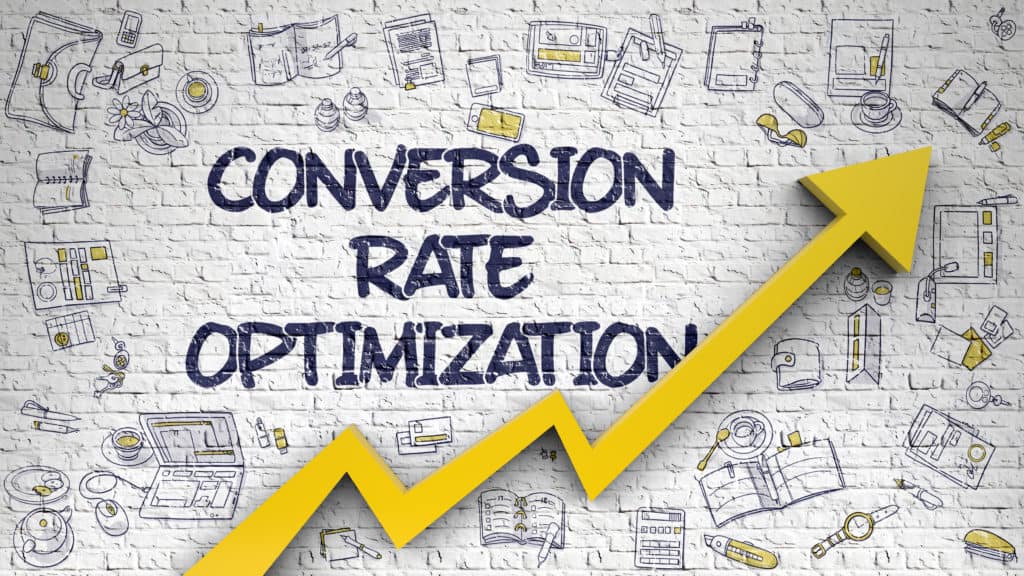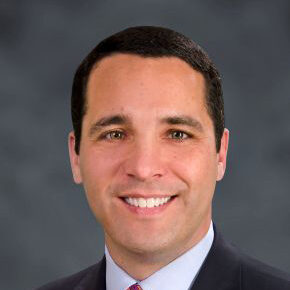
We've been talking about Rankings ≠ Traffic ≠ Inquiries ≠ Clients for about as long as I can remember. And yet, we still regularly run into vendors pitching rankings and traffic. The truth is, most of the time most meaningful gains don't come from "rankings" per se, or even traffic. They come from conversion rate optimization improvements.
In fairness, there's a lot of overlap between rankings, traffic, and conversion improvement. Obviously, one way to improve conversion rates is to earn rankings and traffic for queries that match the right search intent. But let's put that aside for a moment. What I'm talking about are things you can do on your pages to increase the number of people who take the desired action once they've already arrived.
No, we're not talking about the intentional tort. In the context of digital marketing, a conversion is:
A conversion is the general term for a visitor completing a site goal. Goals come in many shapes and sizes. If you use your website to sell products, the primary goal (known as the macro-conversion) is for the user to make a purchase. There are smaller conversions that can happen before a user completes a macro-conversion, such as signing up to receive emails. These are called micro-conversions.
- Moz
For law firms, we usually talk about the following goal conversions:
We also talk about the following micro-conversions:
Put simply, conversion rate optimization includes all the stuff you can do to get more people who visit your pages to call or otherwise contact you to become a client.
Unless you and your vendor are just going to guess, there are two reliable ways to improve conversion:
You can read more about each of these at the Moz post linked-above. I'm going to briefly focus on quantitative research here. Put simply, we're talking Google Analytics Goals. Here's a video from Google:
Like I said, we tend to focus on phone calls, forms, and live chat requests. For this post, I'm going to stick with phone calls. Which means you need to have a call tracking goal configured. We prefer visitor-level call tracking. I also prefer to filter our GA goal to first-time callers. That helps weed-out a lot of the regular "noise" calls that you might get. Keep in mind it's a not perfect 1-to-1 that all first-time callers are potential clients. However, directionally, this is a pretty good metric for conversion rate optimization (CRO).
Combine first-time call tracking with UTMs in your GMB profiles and you can track the number of phone calls that originate from people who clicked-through your GMB listing from a Google search. 🔥

Now we have to "do stuff" to our pages to try to get more of the people who visit our pages to call us. Here are some things we might try:
Of course, the key here is to track the impact of these changes over time. Assume nothing. Sure, start with best practices, but actually test those best practices for yourself. What your target audience prefers on your site isn't necessarily what "the industry" says works. Test outside the box. Maybe they don't want to call you at all!
In any event, if you're in a competitive online landscape (practice area and/or location), you're probably spending quite a bit of time and money "doing stuff" to get more people to your pages. This year, take a step back and analyze your data. Consider deploying more resources on improving conversion, not just rankings and traffic.

Here's a recent Google SERP for "𝘄𝗵𝗼 𝗮𝗿𝗲 𝘁𝗵𝗲 𝗯𝗲𝘀𝘁 𝗰𝗮𝗿 𝗮𝗰𝗰𝗶𝗱𝗲𝗻𝘁 𝗹𝗮𝘄𝘆𝗲𝗿𝘀 𝗶𝗻 𝗽𝗵𝗶𝗹𝗮𝗱𝗲𝗹𝗽𝗵𝗶𝗮." Ads? ❌LSAs? ❌Local Pack? ❌Links? ❌ 🔷 AI Overview? ✅ 6 firms listed. Only one tiny 🔗. Click the 𝗦𝗵𝗼𝘄 𝗺𝗼𝗿𝗲 button? 𝗬𝗼𝘂 𝗴𝗲𝘁: Here's a more detailed look at some of these firms: THE PEARCE LAW FIRM, P.C.Edith Pearce, […]
On April 22, 2025, Google sent an email updating Local Services Ads Additional Terms for Providers: Subject: Action required: important updates to Local Service Ads Additional Terms Many people are arguing that lawyers cannot participate in Local Services Ads, as this would constitute a per se violation of the Rules of Professional Conduct related to […]
Conrad and I recently joined Zack at Lawyerist to record a conversation about AI and marketing. You might think that we spend the whole time on how lawyers can use AI to publish content. You'd be wrong. While AI can certainly support publishing, there are many more interesting ways to use it in legal marketing. […]
As more legal services consumers turn to ChatGPT for local law firm recommendations, a fascinating intersection between AI, search, and maps unfolds. While Google remains the undisputed leader in local business data, ChatGPT is increasingly becoming an entry point for searchers seeking legal representation. But here’s the kicker: instead of keeping users within its ecosystem, […]
When law firms contact us, they usually want to talk: • PPC Ads • SEO Rankings • Lead Generation Very few want to talk: • Brand • Trust & Recognition • Emotional Connection Admittedly, much of this concerns that AttorneySync is known for lead generation across those common digital channels. But even when we start […]
According to an October 2024 study by SE Ranking: "The legal niche triggers the highest percentage of AIOs (77.67%). The average number of links matched between the AI Overview resources and the top 20 search results was 6.49 for legal topics. AI Overviews for legal topics most frequently link to NYCourts.gov (114 links), YouTube.com (48 […]
I'm grateful for my friend, Charley Mann of Law firm Alchemy. If you're a lawyer, subscribe to his Free Email List. In a recent email, Charley calls out bad guru advice on hiring: "Trying to execute a major SEO improvement? You need to find people who will help you, instead of trying to DIY it […]
If you’ve spent any time on LinkedIn, you’ve likely seen posts from law firm SEO experts showing off charts with an “up and to the right” trajectory. These screenshots, often pulled from tools like Semrush or Ahrefs, are meant to signal SEO success. And it’s not just the agencies celebrating—𝗹𝗮𝘄 𝗳𝗶𝗿𝗺𝘀 𝘁𝗵𝗮𝘁 𝗵𝗮𝘃𝗲 𝗵𝗶𝗿𝗲𝗱 𝘁𝗵𝗲𝗺 […]
Meh, links! All things being equal, links still tend to move the dial more than any other factor in legal SERPs. Maybe links are having a diminishing impact internet-wide. But in my experience, quality links, especially relevant links (both topically and geographically), tend to improve law firm visibility in search more than most everything else. […]